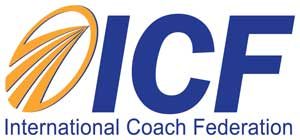What Types of Therapeutic Approaches Do I Use?
Einstein is reputed to have said, “We cannot solve our problems with the same thinking that created them.” Based on my doctoral research and professional experience, I know that positive change requires the use of the whole self.
Another way to say that is that positive change involves the so-called left brain faculties of observation, rational thinking and analysis as well as the so-called right brain faculties of bodily sensing, imagination, and intuitive knowing. By utilizing the strengths of our more familiar cognitive processes and also tapping into the complementary wisdom of the body, emotions and senses, you can achieve integrated and lasting healing and change. The principal methods I employ are Focusing and Internal Family Systems (IFS).
Focusing
Focusing is a process of bringing compassionate awareness to your body’s inner sensations called “felt senses.” A major premise of Focusing is that your body is a living, growing organism that knows your unique right direction forward in your life. When listened to with openness and acceptance, this bodily awareness can reveal more about a situation than your conscious, thinking and conceptualizing mind knows. This broadened awareness can enable you to create new solutions to long-standing problems and to find fresh paths forward that you can whole heartedly embrace and commit to. You can learn more about Focusing here.
Focusing-Oriented Therapy (FOT) is an evidence-based practice. A growing body of research demonstrates the efficacy of Focusing-Oriented Therapy to alleviate a number of conditions, including depression, anxiety, chronic pain, negative body attitudes, panic disorder, dissociation, eating disorders, adjustment difficulties, and others.
Internal Family Systems (IFS)
IFS is a powerful therapeutic approach developed by Dr. Richard Schwartz at the Center for Self Leadership. The IFS model recognizes that every human being has a healthy core Self that possesses many strengths, including perspective, confidence, compassion, and acceptance. We also have an inner system of multiple parts of the psyche, all of which are attempting to serve our best interests.However, these parts sometimes conflict with one another or use extreme measures that may be dysfunctional for the entire person. By bringing compassionate awareness to this inner system, we can bring our parts into harmony and achieve a more whole, healthy and satisfying life.
IFS has been recognized as an evidence-based practice in the National Registry for Evidence-based Programs and Practices maintained by the U.S. Substance Abuse and Mental Health Services Administration (SAMHSA). As a clinical treatment, IFS has been rated effective for improving general functioning and well-being and has been rated as a promising treatment with positive effects on mind (depression, anxiety), body (physical health conditions), and spirit (personal resilience and self-concept). IFS can help clients to overcome fears, resolve action blocks, make difficult decisions, and generally achieve high levels of self-compassion and understanding.






